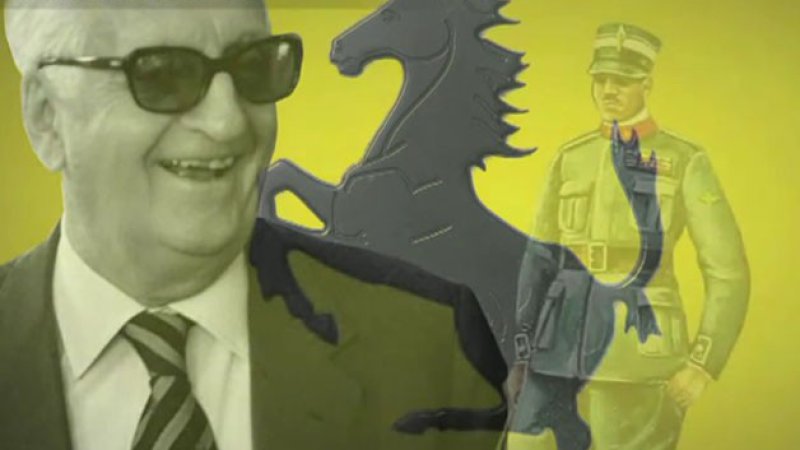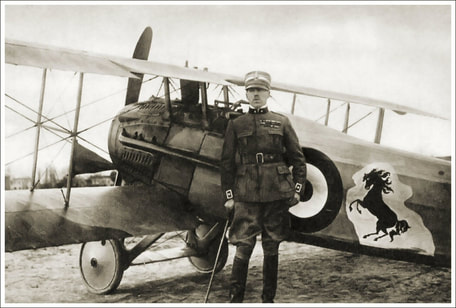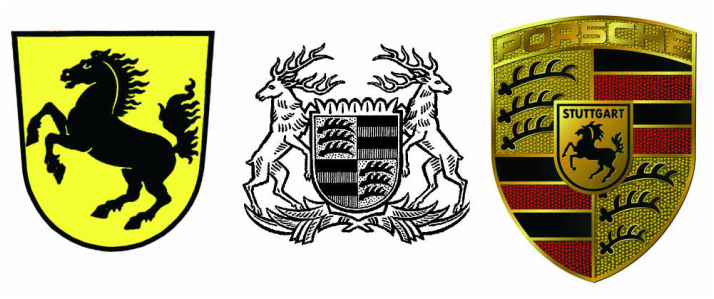|
edited and translated by Bernard Martin On June 17, 1923 Enzo Ferrari had the first of his few victories as a racing driver. In total there would be nine, over a racing career that lasted until 1931. That day, June 17, 1923, is linked to an episode that would play a decisive role in Ferrari’s passage from story to legend. Meanwhile, Giulio Ramponi, his mechanic who had accompanied him in the car, hurried him: "Come on, we must go back home...". That distinguished gentleman was none other but Count Enrico Baracca. His son Francesco, had become a legend in rural Italy at the turn of the century. He was Italy's top fighter pilot of World War I and was credited with 34 aerial victories qualifying him as a Fighter Ace . Francesco Baracca was shot down on June 19, 1918 in his Spad VII. in the clouds above Montello.
It was she who gave Ferrari the symbol which would forever be associated with the activity of the entrepreneur from Modena: The Cavalllino Rampante, which would affectionately be know by tifosi as the "Prancing Stallion". According to Ferrari, in 1923, when I won a race at the Savio track in Ravenna, Mrs. Baracca told me “Put this on your cars, the prancing stallion of my son. It will bring you luck." Surely, even more than the mother of Francesco Baracca could imagine. "The Horse" Ferrari wrote in his memoirs, "was and has remained black. I added the canary yellow background, which is the color of Modena." Interestingly, only nine years after the chance meeting at the victory of the Circuit of Savio, the prancing horse would make his first appearance on the Enzo’s cars. The "debut" took place in Belgium, more precisely in Spa, where on July 10, 1932 was a 24 Hour race. The emblem was stuck on the hood of the 8-cylinder Alfa Romeo 2300 MM. And the rest, as they say, is history. But alas, there's more... The cavallino rampante ties to PorsChe & Stuttgart There is still a bit more backstory that establishes prancing stallion's origins in Germany. The prancing stallion is the symbol of the city of Stuttgart. During the First World War, in an aerial duel, Francesco Baracca shot down an aircraft manufactured in Germany. Upon winning the aerial duel, Baracca landed near the wreckage and recover a piece of the enemy aircraft. The planes where all covered in canvas to cutting a piece off was rather simple. Baracca would keep the badge attached to his plane’s fuselage, made in a factory in Stuttgart. This was quite commonplace behavior for fighter pilots of the era: It was a practice among aviators to recover, if possible, something that would confirm the results of their dogfight battle in the skies. Baracca would make it his own good-luck token. And after his death the prancing horse would be sent to his parents. From them it passed into the hands of Enzo. As a side note, Stuttgart is a modified version of Stutengarten which is an ancient german word for "Gestüt", translated into english as mare garden or stud farm, into Italian as "scuderia". Portions of this article originally posted at: http://www.webalice.it/g.sivocci/biografia-it-en.html
1 Comment
|
AtributionThis is a compilation of articles from a variety of sources and contributors. Attrition and sources are always provided at the top and/or the bottom of the posting. Archives
June 2024
Categories
All
|

The Pittsburgh Vintage Grand Prix Association is a federally registered 501c (3) non-profit organization with a mission to hold a world-class vintage automotive race event for charity.
Since 1983 this volunteer-driven event has raised over $6 million to benefit autistic and developmentally disabled individuals through the Autism Society of Pittsburgh and Allegheny Valley School. The Pittsburgh Vintage Grand Prix remains North America's largest vintage race event, the only one run on city streets, and the 8th largest car show in the World. |




 RSS Feed
RSS Feed